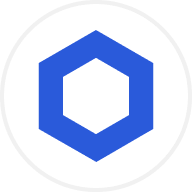How Chainlink and Circle Are Driving Blockchain Innovation in Real-World Assets and Stablecoins
The Intersection of Chainlink, Circle, and Blockchain Innovation
Blockchain technology is reshaping industries at an unprecedented pace, and two key players, Chainlink and Circle, are leading this transformation. By driving advancements in real-world asset (RWA) tokenization, stablecoin adoption, and blockchain interoperability, these organizations are setting the stage for the future of decentralized finance (DeFi) and beyond. This article delves into their groundbreaking initiatives, the technologies they champion, and the broader implications for the blockchain ecosystem.
Chainlink: Pioneering Real-World Asset Tokenization
Chainlink has emerged as a trailblazer in the Real-World Asset (RWA) space, enabling the seamless tokenization of physical and financial assets on the blockchain. With over 530 major GitHub updates in a single month, Chainlink consistently outpaces competitors like Avalanche and Stellar, underscoring its commitment to innovation and adoption.
Chainlink Build and Scale Programs: Driving Ecosystem Growth
Chainlink’s ecosystem is expanding rapidly through its Build and Scale programs, which provide technical and strategic support to early-stage projects and blockchain ecosystems. These initiatives foster a self-reinforcing cycle of innovation and adoption.
Chainlink Build Program: In 2024 alone, 41 new teams joined the program, with 22 Chainlink integrations announced. This program enhances collaboration among developers, creating a thriving ecosystem.
Chainlink Scale Program: Supporting 16 blockchain ecosystems, this program helps cover operating costs for Chainlink oracle networks. It has facilitated over 300 million verified messages across chains, ensuring seamless interoperability and robust security.
Key Technologies: CCIP and Proof of Reserve
Two of Chainlink’s standout technologies are the Cross-Chain Interoperability Protocol (CCIP) and Proof of Reserve. These tools are pivotal in ensuring transparency, security, and interoperability for tokenized assets and stablecoins. By enabling trust and reliability, they are critical to the success of decentralized systems.
Circle: Revolutionizing Stablecoin Innovation
Circle is redefining the stablecoin landscape with initiatives that enhance utility, compliance, and adoption. By integrating USYC, a tokenized money market fund, as collateral for institutional trading, Circle is enabling faster settlement and regulatory compliance, making stablecoins more accessible to institutional players.
USYC and cUSDO: Enhancing Stablecoin Utility
Circle’s USYC stablecoin is positioned as a modern alternative to traditional collateral like Treasury bills. Its integration into institutional trading platforms provides enhanced liquidity and trading flexibility. Additionally, Circle’s collaboration with Binance to integrate USYC and cUSDO further boosts stablecoin adoption, improving liquidity for institutional accounts.
Regulatory Compliance and Transparency
Circle’s unwavering focus on regulatory compliance ensures that its stablecoin solutions meet the highest standards of transparency and security. This commitment not only builds trust among users but also paves the way for broader adoption in traditional financial systems.
Institutional Partnerships: Bridging Blockchain and Traditional Finance
Both Chainlink and Circle have established significant partnerships with major institutions, showcasing their influence in integrating blockchain with traditional finance.
Chainlink’s Collaborations: Partnerships with Swift, Euroclear, and Mastercard highlight Chainlink’s role in institutional-grade DeFi and next-generation transaction infrastructure. These collaborations demonstrate blockchain’s potential to revolutionize financial systems.
Circle’s Collaborations: By working with Binance and other key players, Circle is driving stablecoin adoption and enhancing the utility of digital assets in institutional settings.
Real-World Applications of Blockchain Technology
The innovations spearheaded by Chainlink and Circle are not limited to institutional use cases. Their technologies are making a tangible impact on real-world applications, including:
Tokenized Real Estate: Enabling fractional ownership and liquidity in the real estate market.
Cross-Border Payments: Facilitating faster, more cost-effective international transactions.
Stablecoin Ecosystems: Chainlink’s CCIP and Proof of Reserve are being utilized in projects like SOOHO.IO’s Project Namsan, which aims to create a Korean won stablecoin ecosystem.
The Role of Conferences in Showcasing Blockchain Innovation
Industry events such as the Aptos Experience Conference and Fintech Abu Dhabi play a crucial role in highlighting the impact of blockchain on real-world applications. These conferences showcase Chainlink’s contributions to institutional-grade DeFi, stablecoin payments, and next-gen transaction infrastructure, emphasizing its pivotal role in driving innovation.
Challenges and Opportunities in Blockchain Innovation
While the rapid expansion of Chainlink’s ecosystem and Circle’s stablecoin initiatives is promising, challenges remain. These include:
Scalability: Ensuring blockchain networks can handle increased demand.
Security: Maintaining robust defenses against potential threats.
Regulatory Hurdles: Navigating complex and evolving regulatory landscapes.
Despite these challenges, the commitment of both organizations to innovation and collaboration positions them well to overcome obstacles and continue driving the blockchain industry forward.
Conclusion: Shaping the Future of Blockchain Innovation
Chainlink and Circle are at the forefront of blockchain innovation, transforming industries through their groundbreaking technologies and initiatives. From real-world asset tokenization to stablecoin adoption and institutional partnerships, their contributions are shaping the future of decentralized finance and beyond. As blockchain technology continues to evolve, the collaboration between these two leaders will undoubtedly play a pivotal role in driving the next wave of innovation.

